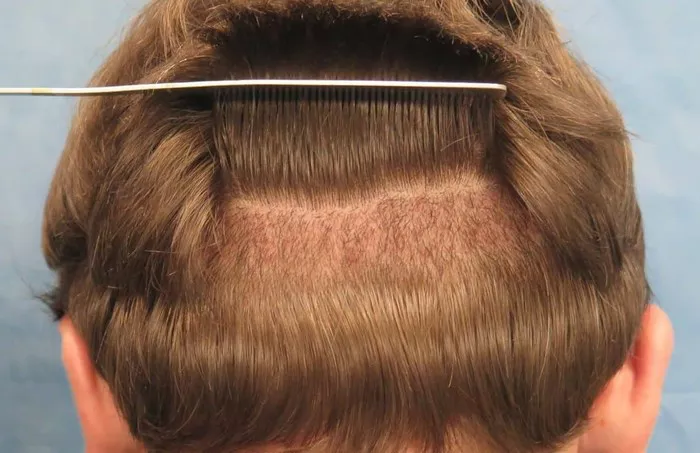Undergoing a hair transplant is a significant decision for anyone looking to restore their hair and confidence. Swelling is a common post-operative concern, but understanding how long it lasts is crucial for managing expectations and planning for the recovery process. In this article, we will explore the factors affecting post-hair transplant swelling, offer guidance on how to reduce it, and provide insights into the typical duration of this side effect.
I. Why Swelling Occurs After a Hair Transplant?
To comprehend the duration of post-hair transplant swelling, it’s essential to first understand why it happens in the first place.
1. Surgical Trauma
Hair transplant procedures, whether FUT (Follicular Unit Transplant) or FUE (Follicular Unit Extraction), involve making tiny incisions in the scalp. This surgical trauma can lead to swelling as the body responds to the injury.
2. Inflammatory Response
The body’s natural response to any injury or surgery involves inflammation. It’s part of the healing process and can manifest as swelling, redness, and tenderness.
II. Factors Affecting Swelling Duration
The duration of post-hair transplant swelling can vary from person to person and may be influenced by several factors.
1. Surgical Technique
The method used for the hair transplant can impact swelling duration. FUT procedures might result in more swelling compared to FUE due to the nature of the incisions.
2. Individual Healing Process
Each person’s body reacts differently to surgical trauma, and this can affect the duration and intensity of swelling.
3. Post-Operative Care
Following the recommended post-operative care instructions from your surgeon can help manage and reduce swelling. This includes keeping the head elevated, applying ice packs, and taking prescribed medications.
4. Skill of the Surgeon
The experience and skill of the surgeon performing the transplant can influence the extent of surgical trauma and, consequently, swelling.
III. How to Reduce Swelling After a Hair Transplant?
While some degree of swelling is normal, there are steps you can take to minimize it and promote a smoother recovery.
1. Elevation
Keeping your head elevated as much as possible, especially while sleeping, can help reduce swelling by encouraging fluid drainage.
2. Cold Compresses
Applying cold compresses to the forehead and scalp can help constrict blood vessels and reduce swelling. Just be sure not to apply ice directly to the skin to avoid frostbite.
3. Medications
Your surgeon may prescribe anti-inflammatory medications or steroids to manage swelling. Follow their recommendations closely.
4. Hydration
Staying well-hydrated is essential for reducing post-operative swelling. Drinking water helps flush excess fluids from the body.
5. Avoid Blood Thinners
In the days leading up to and after the procedure, it’s advisable to avoid blood-thinning medications and substances like aspirin, alcohol, and certain herbal supplements, as these can exacerbate swelling.
IV. Typical Duration of Swelling
The duration of swelling after a hair transplant is a common question among patients. While it varies based on individual factors and the extent of the procedure, here’s a general guideline:
1. Initial Swelling
The most significant swelling typically occurs within the first 2 to 4 days after the hair transplant. This is when it’s most noticeable.
2. Subsiding Swelling
After the initial few days, swelling gradually subsides. By the end of the first week, it’s noticeably reduced.
3. Complete Resolution
In most cases, swelling resolves entirely within 2 to 3 weeks. However, some mild residual swelling may persist for a bit longer.
V. When to Be Concerned About Swelling?
While some degree of swelling is normal and expected after a hair transplant, there are instances where you should seek medical advice:
1. Severe Swelling
If swelling worsens or becomes increasingly painful after the first few days, consult your surgeon.
2. Infection
Swelling accompanied by signs of infection, such as redness, pus, or fever, requires immediate medical attention.
3. Allergic Reaction
If you suspect an allergic reaction to medications or materials used during the transplant, contact your surgeon right away.
See Also: [Revealed!] How long to look normal after hair transplant?
VI. Conclusion
In conclusion, swelling after a hair transplant is a common side effect due to surgical trauma and the body’s natural healing response. The duration and intensity of swelling can vary, but typically, it subsides within 2 to 3 weeks. Proper post-operative care, prescribed medications, and following your surgeon’s recommendations are essential for managing and reducing swelling.
If you have concerns about your post-transplant swelling, it’s always advisable to consult with your surgeon or healthcare provider for professional guidance and reassurance during your recovery process. Remember that while swelling can be uncomfortable, it’s usually a temporary phase on your journey to achieving the full, healthy head of hair you desire.


